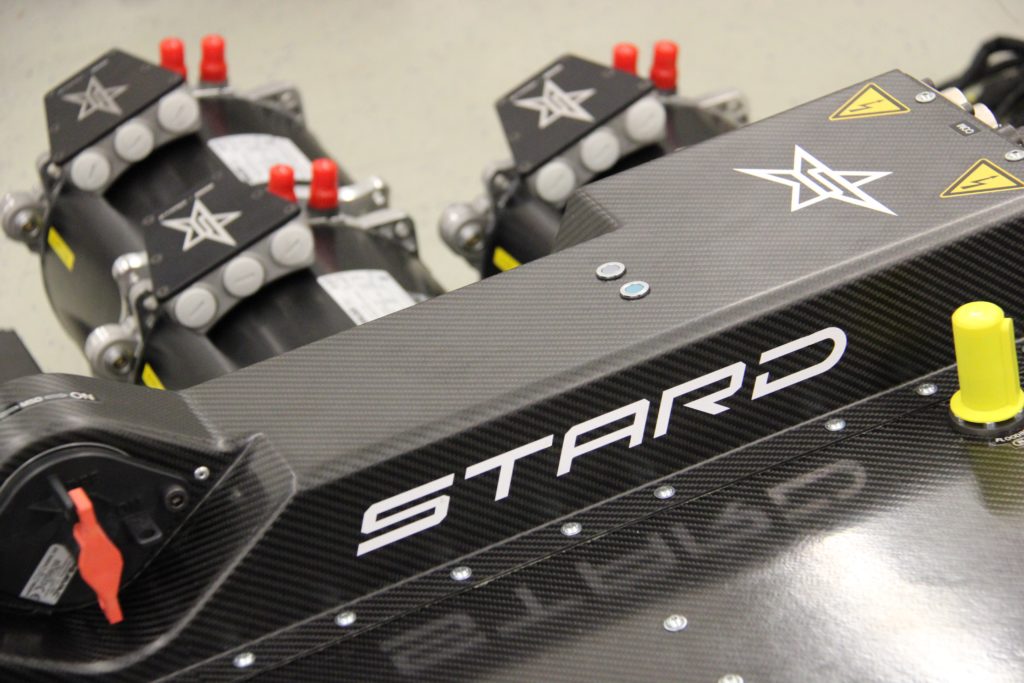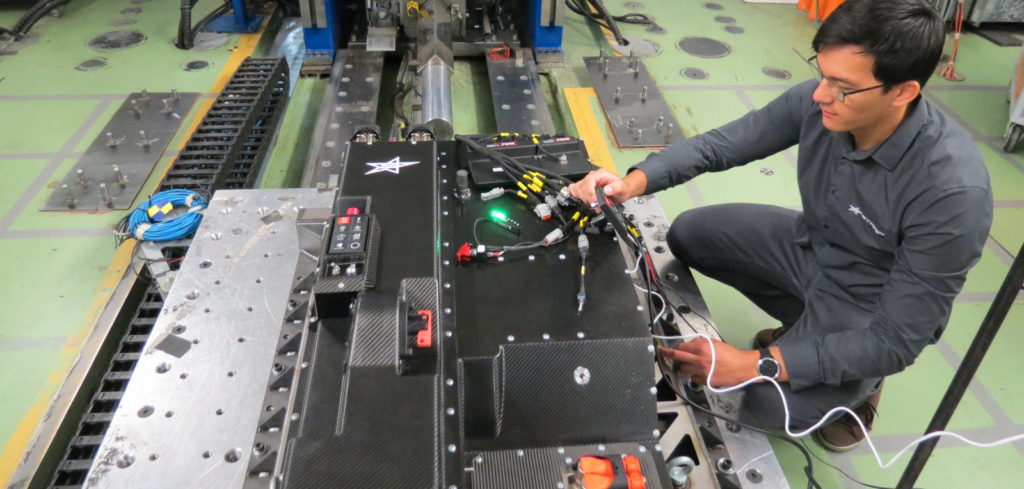Projekt E was supposed to be the 2020, all-electric support series for the World Rallycross Championship, but with the WRX season start delayed until the end of August the cars have yet to turn a wheel. There is some good news, however. STARD (Stohl Advanced Research and Development), which is producing the series’ cars, recently announced that it had passed an important development milestone for the project: the energy storage system has cleared the FIA’s crash tests.
“We have invested a lot in our high-voltage traction battery development competence,” said STARD CEO Michael Sakowicz. “Motorsport and very high-performance battery systems are dramatically different to road car applications for two main reasons: safety requirements and power density. In the area of safety, the FIA has imposed very strict criteria for BEV traction batteries. The fact that STARD is in a very elite group of industry-leading companies like Williams and McLaren, by being able to offer FIA crash-tested high-performance battery systems for motorsport application, is the result of many years’ hard work.”
The FIA crash test criteria includes deceleration tests, where values are substantially higher than those for electric road cars, and are even more punishing when deployed to assess traction battery systems (as opposed to smaller batteries used in hybrid applications). Static mechanical tests are also employed, and are used to check impact and protrusion resistance of the RESS (rechargeable energy storage system) casing.
Prior to the tests, STARD, which is part of former racer Manfred Stohl’s engineering group, undertook extensive in-house validation of both its battery system and traction motors. The traction batteries are housed in a carbon-fiber casing and, thanks to well-validated simulation systems, STARD says that trial crash tests were not required, and its system passed the FIA’s procedures first time.
Philipp Thonet, STARD CTO, explained, “The entire development process we carried out in-house started from individual lithium-ion cell level upward. That included CAD packaging of all mechanical and electronic components, CFD simulation of the cooling system, FEA optimization and crash analysis of the prepreg carbon-fiber reinforced casing and, especially, developing an in-depth understanding of the electrochemical and electric requirements and limits of lithium-ion cell technology. In addition to the simulation and CAD methods we are also processing physical lithium-ion cells and dyno testing modules in-house.”




